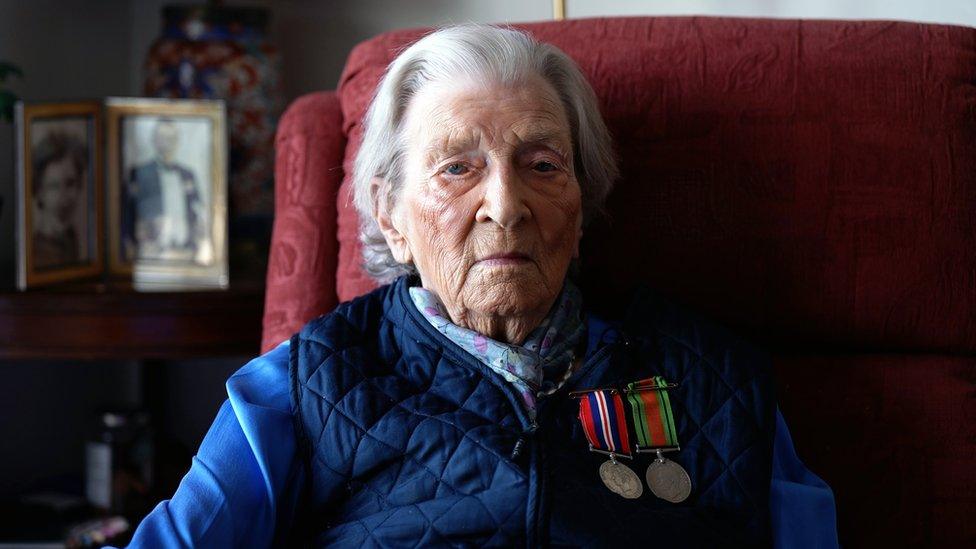Remembrance: 10,000 knitted poppies and a brave Irish nurse
- Published
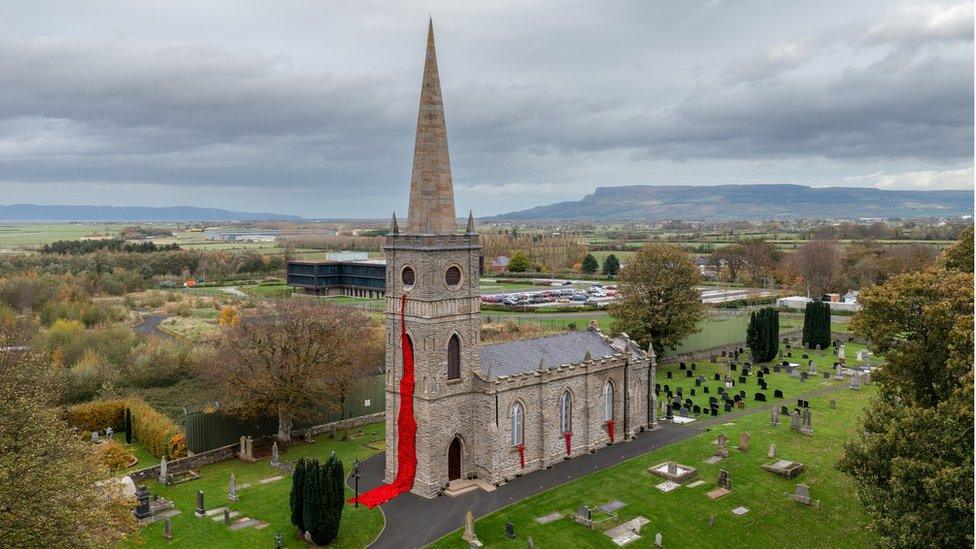
The poppies were knitted on friendly Fridays by members of the community
More than 10,000 knitted poppies, an ancient church and the story of a brave Irish nurse.
At Tamlaghtfinlagan Parish Church in Ballykelly, County Londonderry, a huge net of poppies cascades down the church tower.
They are just one part of the parish's four-day festival of remembrance.
The knitting was a labour of love from members of the local community who came together to make the poppies on "friendly Fridays".
"We put out an appeal on Facebook and that brought people from outside the church, from different walks of life and faiths," said vestry member Samuel Stewart.
"They weren't asked where they came from - anyone and everyone came.
"Even though the poppies are finished, they still come on Fridays for a cup of tea and a chat."

Nigel McFarland took this stunning shot of the church lit up at night
Tamlaght is the townland name, which comes from the Irish for burial ground, and Finlagan comes from St Findluganus.
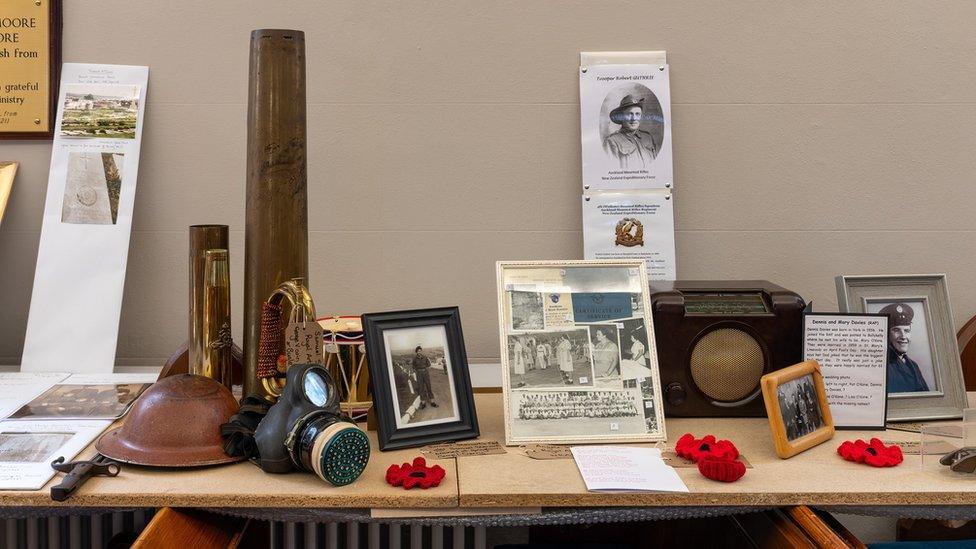
Local people have sent in their stories
"The current building opened in 1795 and the old churches are a few miles away and are in ruins," Mr Stewart explained.
Inside, the church was full of models, displays and pictures, piecing together the village's history.
"We did an appeal for local parishioners who had been married in the church.
"We have a lot of RAF stories because of Ballykelly's military history as a Royal Air Force station," adds Samuel.
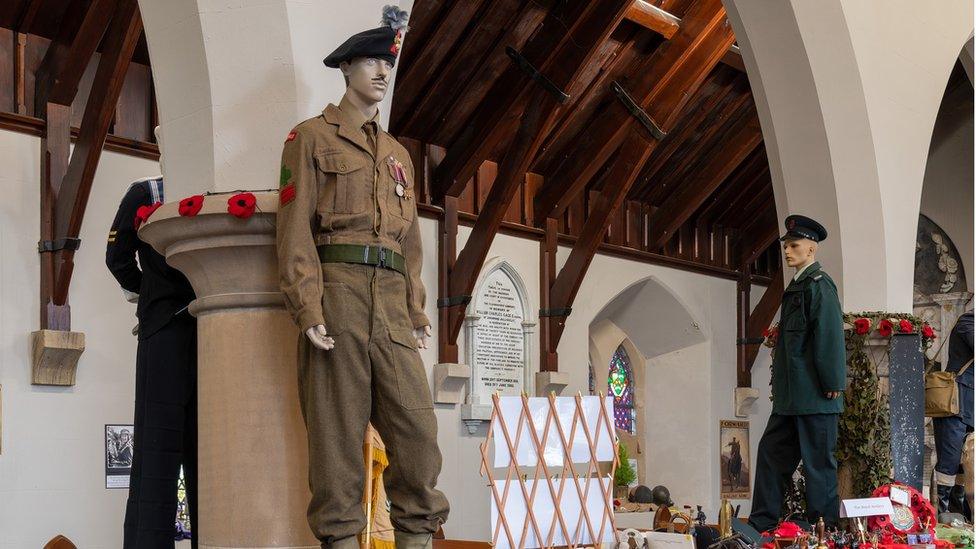
Inside the church are examples of uniforms that would have been worn
There were also local wartime stories on display.
One was that of nurse Molly McGinnis from Ballykelly who received the Military Medal for her actions in France during World War One.
She was one of 147 women who were awarded the medal, just nine of whom were Irish.
'Illegal whiskey still'
Her great niece Rosemary Henderson has written a book about her., external
Molly was born in Carnamuff, outside Ballykelly in the 1880s, the second youngest of six.
"The story is that her father operated an illegal whiskey still under the house and that's how he paid for their education," said Rosemary.

Molly McGinnis with her medal
"I'm reliably informed it's still there in the ruins of the old house."
Molly's older brother, a doctor in Dublin, paid for her to go to the city to study nursing.
"We think she went there around 1914, just before the war broke out," said Rosemary.
She signed up under the Red Cross and St John Ambulance Voluntary Aid Detachment (VAD) scheme and served in England, then in France where she was a sister throughout the war.
'I didn't run away'
The St John Ambulance hospital was bombed in May 1918.
It had been repeatedly bombed, as it was beside a railway line and a prime target, Rosemary explained.
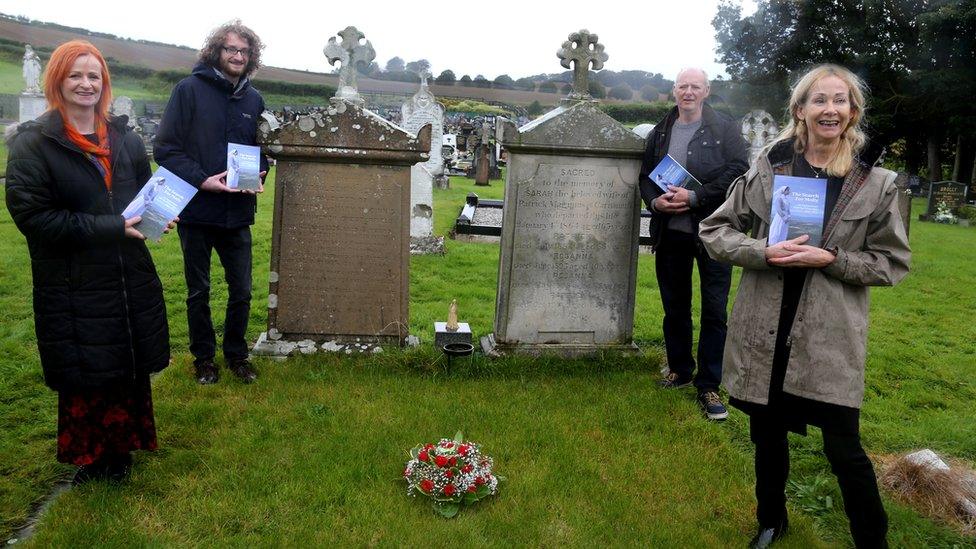
Rosemary, (far left), and members of her family at Molly's graveside at St Finlough's church in Ballykelly
It was destroyed. and Molly was awarded the medal for bravery for helping patients, digging them out and rescuing them.
"Years later when she was asked why she got the medal she answered: 'Because I didn't run away,'" said Rosemary.
The London Gazette, July 1918, read, external: "For gallantry and devotion to duty during an enemy air raid. She showed great courage, took charge of a ward, and sustained her patients."
Irish money
Things were not over for Molly after that. She relocated to another St John Ambulance hospital in Etaples.
"It was a charity, not government-run so their hospital was funded primarily by Irish money," said Rosemary.
"Counties Derry and Donegal provided a huge chunk of the money and many of the staff were from Ireland."
While the fighting ended in 1918, the hospital did not close until 1919 because of the wounded who were not fit to travel.
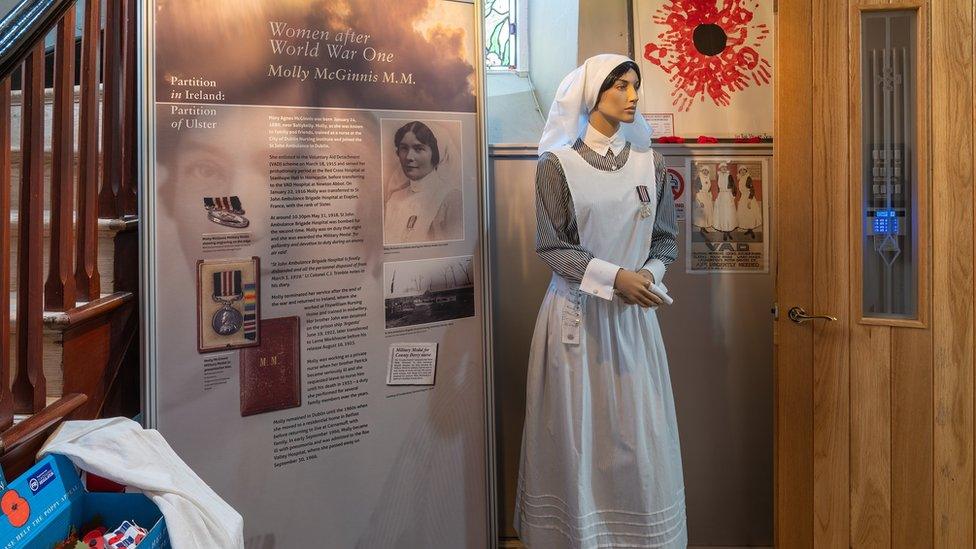
Molly's story on display inside the church
She was one of the last to leave, before coming back to Dublin and to study to become a midwife.
However, Molly came back a "different woman" to a changed place to the one she had left.
When she returned Ireland had been going through seismic political changes, ultimately leading to partition.
Eventually she retired to her birthplace. Another of her sisters would go on to be a nun in New Zealand.
Rosemary met her great aunt as a young child when visiting relatives before her death in 1966.
On the opening night, a tree was planted in the grounds, which was a gift from Queen Elizabeth II.

St Mary's and Limavady High School both performed
There has been music and artwork from St Mary's High School Music group, Limavady High School and other local choirs.
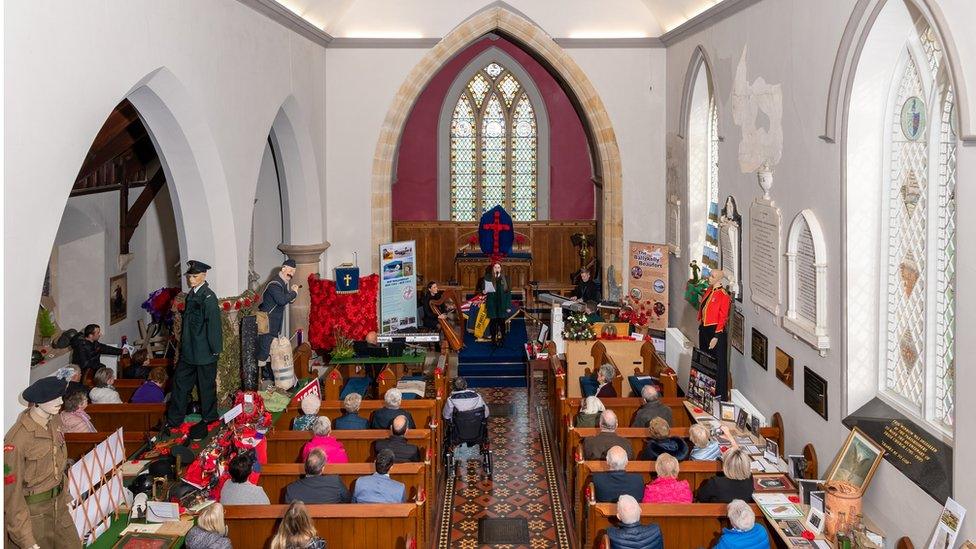
Samuel Stewart says the festival has been a community effort, local people and other churches coming together to help make it a success
The Festival of Remembrance culminated with a Remembrance Service on Sunday morning.
Related topics
- Published10 November 2022
